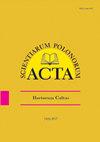The effect of foliar application of amino acids on some nutritional properties, antioxidant capacity and some other physiologic parameters of African marigold (Tagetes erecta L.), Taishan ‘Yellow’ and ‘Orange’
IF 0.7
4区 农林科学
Q4 HORTICULTURE
引用次数: 0
Abstract
African marigold (Tagetes erecta L.) is one of the most well-known ornamental, medicinal and edible flowers in the world. A factorial experiment based on completely randomized design with 20 treatments in 3 replications, 60 plots and 5 plants per plot were conducted in order to investigate the effect of amino acids on growth, nutritional parameters and antioxidant capacity in African marigold. Experimental treatments included two cultivars of African marigold (‘Yellow’ and ‘Orange’) and foliar application of three amino acids (arginine, glutamine and proline) each one at three levels (100, 500 and 1000 μM). Distilled water was used as control. The results showed that the application of amino acids increased plant height, display life, fresh weight and dry matter of flower, leaf total chlorophyll and petal carotenoid compared to the control in both African marigold cultivars. Petal protein content and malondialdehyde (MDA) were not affected by the above treatments, but the use of amino acids, especially arginine and proline, increased proline and calcium, zinc and iron in the petals of both African marigold cultivars. Treatments of 100 μM arginine and 1000 μM proline induced the highest vitamin C in both African marigold cultivars. In ‘Orange’ cultivar, the highest enzyme activity of superoxide dismutase (SOD) and ascorbate peroxidase (APX) belonged to 1000 μM proline and the highest peroxidase (POD) activity belonged to two treatments of 100 μM arginine and 1000 μM proline. In ‘Yellow’ cultivar, all three levels of arginine and proline together with 1000 μM glutamine significantly increased SOD and POD activity compared to other treatments. Also, the highest APX enzyme activity was recorded for 100 μM arginine. The results of the present study showed that external application of amino acids, especially arginine and proline, improved the nutritional properties of both African marigold cultivars by increasing the activity of antioxidants.叶面施氨基酸对非洲万金菊(Tagetes erecta L.)、泰山‘黄’和‘橙’部分营养特性、抗氧化能力及其他生理参数的影响
非洲万寿菊(Tagetes erecta L.)是世界上最著名的观赏、药用和食用花卉之一。为研究氨基酸对非洲万金菊生长、营养参数和抗氧化能力的影响,采用完全随机设计的析因试验,共20个处理,3个重复,60个地块,每地块5株。试验处理包括两个非洲万金菊品种(“黄”和“橙”),叶面施用3种氨基酸(精氨酸、谷氨酰胺和脯氨酸),每种氨基酸在100、500和1000 μM的水平上施用。以蒸馏水为对照。结果表明,与对照相比,氨基酸处理显著提高了非洲万金菊的株高、展示寿命、花鲜重、花干物质、叶片总叶绿素和花瓣类胡萝卜素。上述处理对花瓣蛋白质含量和丙二醛(MDA)含量没有影响,但氨基酸的使用,特别是精氨酸和脯氨酸的使用,增加了两个非洲万金菊品种花瓣中脯氨酸和钙、锌、铁的含量。在100 μM精氨酸和1000 μM脯氨酸处理下,非洲万金菊的维生素C含量最高。超氧化物歧化酶(SOD)和抗坏血酸过氧化物酶(APX)活性在1000 μM脯氨酸处理中最高,过氧化物酶(POD)活性在100 μM精氨酸和1000 μM脯氨酸处理中最高。与其他处理相比,精氨酸和脯氨酸水平和1000 μM谷氨酰胺水平均显著提高了‘黄’品种的SOD和POD活性。此外,100 μM精氨酸的APX酶活性最高。本研究结果表明,外用氨基酸,特别是精氨酸和脯氨酸,通过提高抗氧化剂活性,改善了非洲万金菊品种的营养特性。
本文章由计算机程序翻译,如有差异,请以英文原文为准。
求助全文
约1分钟内获得全文
求助全文
来源期刊
CiteScore
1.30
自引率
14.30%
发文量
61
审稿时长
4-8 weeks
期刊介绍:
In Acta Scientiarum Polonorum Hortorum Cultus we publish original research papers and review articles containing new and significant information on broad aspects of horticulture and related disciplines. The papers are published in English only, in six issues yearly.

 求助内容:
求助内容: 应助结果提醒方式:
应助结果提醒方式:


